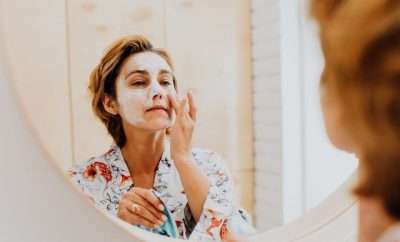 stock.adobe
stock.adobe
Pros and Cons of Using a Tanning Bed versus Natural Sunlight
Pros and Cons of Using a Tanning Bed versus Natural Sunlight
As the weather warms up and summer approaches, many people start to think about getting a tan. While many options are available for achieving a sun-kissed glow, two of the most popular methods are using a tanning bed and soaking up natural sunlight. But which one is the best choice? In this article, we’ll take a closer look at the pros and cons of each option to help you decide which one is right for you.
The Pros of Using a Tanning Bed
Tanning beds, also known as sunbeds or solariums, are artificial sources of ultraviolet (UV) light that are designed to give the skin a tanned appearance. They’ve been around for decades and are widely available at tanning salons, spas, and gyms.
One of the main advantages of tanning beds is that they can be used anytime, regardless of the weather. This makes them a convenient option for people living in areas with long, cold winters or those who can’t get out in the sun as much as they’d like.
Tanning beds also allow for more controlled and consistent tanning results. Most modern sunbeds have adjustable levels of UV light intensity so that you can customize your tanning experience to your liking. This can be particularly helpful if you’re trying to achieve a specific shade of tan or have sensitive skin prone to burning.
Another pro of using a tanning bed is that some people find it more convenient and time-effective than natural sunlight. With a tanning bed, you can get a full-body tan in just a few minutes, whereas it might take hours to get the same tanning from natural sunlight. This can be especially appealing for busy people with little time to spend outside.
The Cons of Using a Tanning Bed
Despite the convenience and control tanning beds offer, there are also several drawbacks.
One of the biggest cons of tanning beds is the increased risk of skin cancer and other skin conditions. UV light, whether from the sun or a tanning bed, can damage the DNA in your skin cells, leading to skin cancer. According to the World Health Organization (WHO), people who use tanning beds are 75% more likely to develop melanoma, the deadliest form of skin cancer.
In addition to the increased risk of cancer, using a tanning bed can cause other skin problems, such as premature aging, sunburn, and eye damage. The intense UV light can damage the collagen in your skin, leading to wrinkles, age spots, and other signs of aging. It can also cause sunburn, which can be painful and increase your risk of skin cancer. Tanning beds can also harm your eyes, as UV light can damage the cornea and the retina.
Another con of using a tanning bed is that it can be expensive to use regularly. Tanning salons typically charge by the session or by the month, and the costs can add up quickly if you’re using the bed frequently. Depending on your location and the salon you go to, you could pay hundreds or even thousands of dollars per year for tanning bed sessions.
The Pros of Using Natural Sunlight
Natural sunlight is the most traditional and widely available method of getting a tan. It’s free and readily available to everyone, and it can provide several health benefits, including vitamin D production. Vitamin D is an essential nutrient that helps your body absorb calcium and phosphorus, which are necessary for healthy bones and teeth. It’s also believed to have other health benefits, such as boosting the immune system and helping to prevent certain types of cancer.
Another pro of using natural sunlight for tanning is that some people find it more enjoyable and relaxing. There’s something about being outside in the sun and fresh air that can be rejuvenating and stress-reducing. Plus, a variety of outdoor activities can be done while tanning, such as swimming, hiking, or playing sports, which can add an element of fun to the experience.
The Cons of Using Natural Sunlight
While there are certainly benefits to tanning in natural sunlight, there are also several downsides.
One of the main cons of using natural sunlight for tanning is that it’s dependent on the weather and your location. If you live in a long, cloudy winter or you’re unable to get outside during the day due to work or other commitments, it can be difficult to get enough natural sunlight for tanning.
Another con of using natural sunlight is that it can result in uneven or patchy tanning. It’s difficult to get consistent exposure to the sun, and you might end up with areas of your skin that are more tanned than others. This can be particularly frustrating if you’re trying to achieve a uniform, all-over tan.
Finally, using natural sunlight for tanning increases the risk of sunburn and skin damage. The sun’s rays can be intense, especially during the peak hours of the day.
Conclusion
As you can see, both tanning beds and natural sunlight have pros and cons. Ultimately, the best option for you will depend on your personal preferences, your skin type, and your budget.
If you are considering using a tanning bed, it’s important to be aware of the risks and to take precautions to protect your skin. This might include using a lower intensity of UV light, using protective eyewear, and applying broad-spectrum sunscreen to your skin before and after your session.
If you use natural sunlight for tanning, it’s equally important to protect your skin. This means wearing sunscreen with a high SPF, seeking shade when the sun is at its strongest, and wearing protective clothing such as a hat and sunglasses.
Ultimately, it’s up to you to decide which method is best for you. Just be sure to research and make an informed decision about your tanning habits. Whether you choose a tanning bed or natural sunlight, it’s important to take care of your skin and to be aware of the risks involved.














